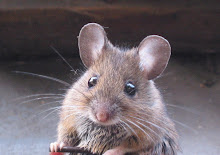Adapted from the
Kazuo Ishiguro novel of the same name,
Never Let Me Go is a sadly quiet science fiction movie with ruminations about genetic engineering and the meaning of life. And there's a love triangle. Although the novel apparently holds onto its secrets for much longer (and I've just requested the book from the library to see how it compares to the movie), the movie does not SO SPOILERS AHEAD EVEN THOUGH THE MOVIE COMES RIGHT OUT WITH IT: we open with title cards telling us that in the late 1950s, a scientific breakthrough meant that most diseases that were previously unsurvivable were now curable and that by the mid-1960s, human life expectancy was in the 100s. This progress comes at a price and we are first introduced to Kathy (Carey Mulligan), Tommy (Andrew Garfield) and Ruth (Keira Knightly) when they are pre-teens in 1978, at an English boarding school, Hailsham. These children have no parents: they are human clones, formed in a lab to provide clean and healthy organs for sick, natural humans. From their childhood, they are kept safe and sheltered and are told what an honor it is to be Donors. The film follows Kathy, Ruth and Tommy to 1985, when they move to a group home, meet other Donors from other places and learn a little about the world before their required donations begin when they are in their mid-20s.
Never Let Me Go is calm and measured, much like these Donors' lives, and chooses to focus on the relationships among the three main characters, their hopes and dreams, and just touches on the moral issues surrounding their lives (are these cloned Donors humans? is it right to give these young people life, only to take it away from them?). One of the saddest scenes, I thought, takes place when Kathy, Tommy and Ruth are still little, living at Hailsham. The students collect tokens and every so often, a delivery van will bring boxes of treats and toys for them to purchase with their tokens. A small group of students waits eagerly at the door, asking the deliverymen if it is "a bumper crop" this time. The men say, yes, it is, but when the contents of the boxes are spilled out onto the tables, it's nothing but old dolls, broken toys, decks of dog-eared playing cards and other castoff bits of rubbish that the real people have donated. The little donor children don't know that this is rubbish and it is heartbreaking to see how happy they are to have new things to play with.








No comments:
Post a Comment